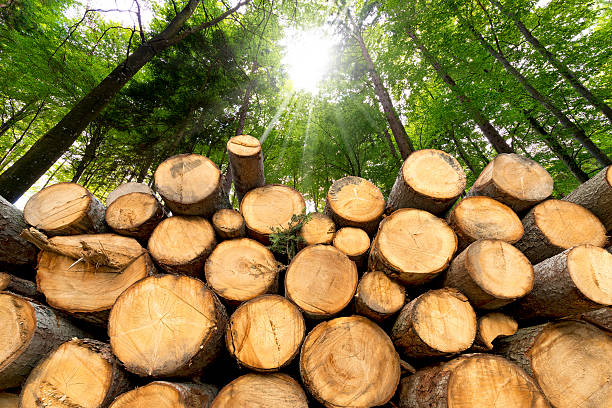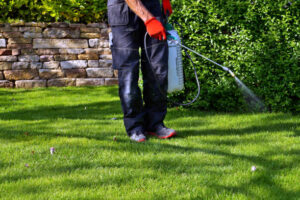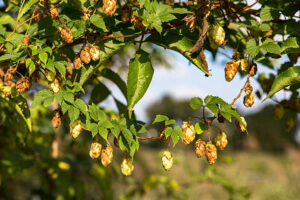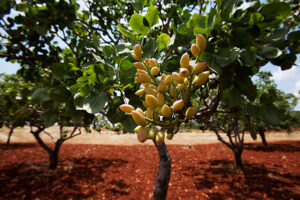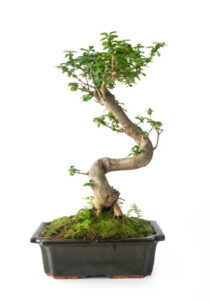Turning Fallen Trees into Firewood Logs: A How-To Guide
Introduction:
In the wake of nature’s unpredictable forces, fallen trees often become a prevalent sight in our yards and landscapes. Rather than viewing them as mere obstacles, consider the opportunity they present for a valuable resource: firewood. Converting fallen trees into firewood logs not only clears your outdoor space but also provides a sustainable and cost-effective way to fuel your fireplace or wood stove. This how-to guide delves into the process, offering practical insights to help you transform fallen trees into a winter-ready stash of firewood.
Selecting the Right Wood:
Not all wood is created equal when it comes to burning efficiently. Hardwoods such as oak, hickory, and maple are prized for their high energy content and slow-burning properties. Softwoods like pine and spruce ignite quickly but burn faster. Choose hardwoods for a longer-lasting, consistent heat output.
Assessing Safety Concerns:
Before you begin the process of turning fallen trees into firewood, assess safety concerns. Identify any potential hazards such as unstable branches, leaning trunks, or entangled limbs. Wear appropriate safety gear, including gloves, eye protection, and sturdy footwear, to minimize the risk of accidents during the woodcutting process.
Equipping Yourself:
To efficiently turn fallen trees into firewood, having the right equipment is crucial. Invest in a reliable chainsaw with a sharp chain, safety features, and an engine suitable for your intended workload. Additionally, gather essential tools such as a splitting maul, wedges, and a sledgehammer for the splitting process.
Processing Fallen Trees:
Begin by cutting the fallen tree into manageable lengths, commonly referred to as “rounds” or “logs.” Aim for pieces around 16 to 18 inches in length, suitable for most wood-burning appliances. Ensure a stable base for cutting, and make each cut with precision to maintain safety and efficiency.
Utilizing the Three-Cut Technique:
For trees with a diameter larger than your chainsaw’s cutting capacity, use the three-cut technique. Make an undercut on the side facing the direction you want the tree to fall, followed by an overcut slightly above the undercut. Finally, make a back cut to meet the two previous cuts, allowing the tree to fall in the desired direction.
Seasoning and Drying:
Freshly cut wood contains a high moisture content, making it unsuitable for burning. To enhance its combustibility, allow the wood to season and dry properly. Stack the rounds in a well-ventilated area, preferably off the ground, for at least six months to a year. This process ensures that the wood reaches an optimal moisture level for efficient burning.
Splitting Techniques:
To further facilitate the drying process and create manageable firewood, splitting the seasoned rounds becomes essential. Utilize a splitting maul or axe to divide the rounds along the grain. Aim for uniform pieces, as this promotes consistent burning and easier stacking.
Choosing the Right Storage:
Proper storage is crucial to maintain the quality of your firewood. Store the split logs in a dry, well-ventilated location, protected from rain and snow. Elevating the woodpile off the ground and covering the top with a tarp or roofed structure prevents moisture absorption and ensures a ready-to-burn supply.
Ensuring Proper Airflow:
Airflow is key to maintaining the dryness of your firewood. Stack the logs with gaps between them to allow air circulation. This not only aids in continued drying but also prevents the growth of mold and fungi that can compromise the quality of the wood.
Addressing Insect Infestations:
Wood-boring insects can infest firewood, causing damage and potential issues when brought indoors. To mitigate this risk, inspect the woodpile regularly for signs of infestation, such as exit holes or sawdust-like frass. Store the firewood away from your home until it’s ready to be burned.
Calculating Heating Needs:
Understanding your heating needs helps you estimate the amount of firewood required for the winter season. Factors such as the size of your home, insulation levels, and regional climate influence the consumption rate. Plan accordingly to ensure you have an adequate supply of seasoned firewood to last through the colder months.
Embracing Sustainability:
Turning fallen trees into firewood isn’t just a practical solution; it’s a sustainable approach to utilizing natural resources. By repurposing fallen trees from your property, you contribute to a cycle of resourcefulness that minimizes waste and promotes a healthier ecosystem.
Considering Wood Density:
While hardwoods are generally preferred for firewood, it’s essential to consider the density of the wood. Denser woods, such as oak and hickory, burn longer and produce more heat compared to less dense varieties. Understanding the density of different woods helps optimize your firewood selection for heating efficiency.
Efficient Chainsaw Use:
When using a chainsaw, efficiency is key. Keep the chainsaw well-maintained with a sharp chain to ensure clean cuts. Adjust the tension of the chain regularly, and carry extra chains if you’re working on a larger project. A well-functioning chainsaw enhances the cutting process and minimizes strain on both the tool and the user.
Safety in Tree Felling:
For those venturing into tree felling, safety remains paramount. Assess the tree’s lean, potential hazards, and the direction you want it to fall. Establish an escape route, and ensure that others are at a safe distance during the felling process. Adhering to proper safety protocols significantly reduces the risk associated with tree felling.
Optimizing the Splitting Process:
When splitting wood, focus on the natural grain of the wood to make the process more efficient. Aim the splitting maul or axe along the wood’s natural lines, allowing the tool to follow the path of least resistance. This technique requires less effort and results in cleaner splits, making the firewood more manageable.
Creating a Wood Storage System:
Organizing your firewood storage can streamline the retrieval process and contribute to overall efficiency. Consider creating a tiered wood storage system, where wood is stacked in alternating directions. This not only maximizes airflow but also makes it easier to locate and retrieve specific pieces when needed.
Utilizing Wood Chips and Bark:
Don’t overlook the value of wood chips and bark generated during the cutting and splitting process. These byproducts can be repurposed for various uses in your garden, such as mulching or enhancing soil structure. Embracing a zero-waste mindset ensures that every part of the fallen tree contributes to your overall gardening endeavors.
Investing in a Log Splitter:
For those with substantial wood-cutting needs, investing in a log splitter can significantly expedite the splitting process. Log splitters come in various types, including manual, electric, and gas-powered options. Choosing the right log splitter for your requirements can save time and effort, especially when dealing with a large volume of firewood.
Rotating the Woodpile:
To maintain the quality of your firewood, periodically rotate the woodpile. This practice ensures that all sides of the wood are exposed to air and sunlight, preventing moisture buildup on the underside of the stack. Rotating the woodpile is particularly beneficial during extended periods of wet weather.
Monitoring Weather Conditions:
Keep an eye on weather conditions, especially when the firewood is in the seasoning phase. If rain is imminent, cover the woodpile with a waterproof tarp to prevent moisture absorption. Conversely, take advantage of sunny days to accelerate the drying process by exposing the firewood to sunlight.
Customizing Log Lengths:
Consider customizing log lengths based on your specific heating appliance. While the standard length is often around 16 to 18 inches, adjusting the length to fit your fireplace or wood stove can optimize the burning process and reduce the need for additional cutting later on.
Conclusion:
In the realm of firewood, the journey from fallen trees to crackling flames in your fireplace is a rewarding one. This how-to guide has provided practical insights into the process, from selecting the right wood to calculating heating needs. As you embark on the journey of turning fallen trees into firewood logs, may this guide serve as a companion, ensuring that your efforts yield a bountiful and sustainable source of warmth for the winter months. Happy woodcutting!

